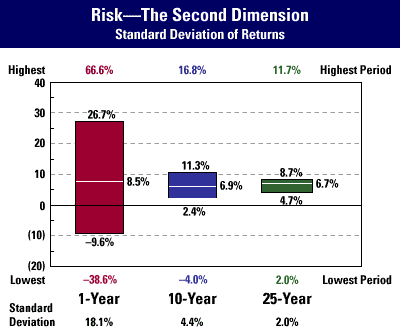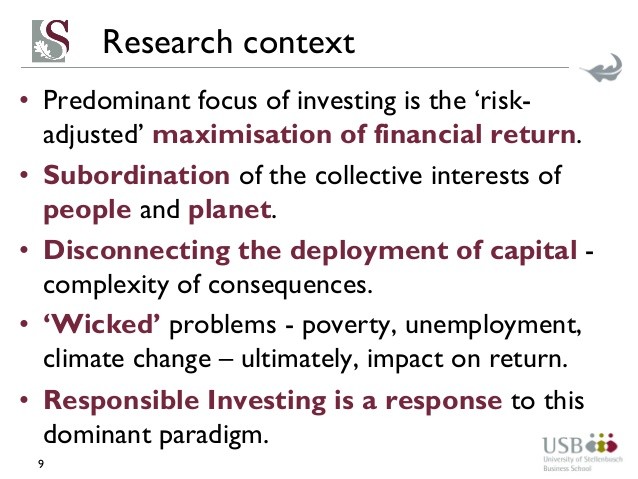Focus on RiskAdjusted Rates of Return on Your Investments
Post on: 28 Май, 2015 No Comment

How Your Risk Adjusted Rate of Return for Your Investments Differs By Situation
The absolute return you earn on your investment isn’t a sufficient enough gauge of performance. You need to look at your risk-adjusted rate of return to factor in the danger you took to generate your profits, gains, dividends, rents, or other income. Warchi / E+ / Getty Images
If you have more than a casual interest in building wealth and investments, you have no doubt come across an investment phrase called risk-adjusted rate of return. It’s especially popular with the value investing crowd, which is made up of men and women who tend to focus first, and primarily, on avoiding major losses and only then on generating gains.
Although the concept itself is not particularly easy to define — there are no rules — focusing on risk-adjusted rate of return is an important protection that many investors would be wise to use when evaluating the various opportunities available to them, whether investing in a 401(k), 403(b), Simple IRA, SEP-IRA, Traditional IRA, Roth IRA. Roth 401(k), brokerage account. buying a car wash, or starting a new business.
The Concept of Risk Adjusted Rate of Return
The basic premise behind using risk-adjusted rate of return is that you cannot look at the potential payoff of any investment and simply rank them from highest to lowest in terms of attractiveness. The reason is that it’s possible to juice profits by doing incredibly stupid things, such as taking on risky ventures that aren’t likely to succeed, or using substantial leverage such as borrowing large sums of money or trading in assets based on market movements as opposed to underlying intrinsic value.
In other words, if you had $10,000 to invest and Potential Investment AAA offered 10% per year, or $1,000 profit at the end of 12 months, and Potential Investment FFF offered 40% returns, or $4,000 profit at the end of 12 months, you would likely go for the latter at first glance. If you knew, however, that Investment AAA had only 2% chance of total loss and Investment FFF had a 60% chance of total loss, your analysis would change. On a risk-adjusted rate of return basis it is clear that Investment FFF (which we should probably call Speculation FFF since it can hardly be called an investment) is not 4-times more attractive despite offering a rate of return 4-times as high.
In fact, given the basic rules of probability, Investment FFF is not even an intelligent gamble (to find out if it were, you take the potential gain, in this case $4,000, and multiply it by the odds of the bet coming out in your favor, or 0.40 resulting in $1,600. That is, the theoretical most you should be willing to risk for such a risk-adjusted rate of return would be $1,600, not the full $10,000. If you come out ahead, it’s pure, dumb luck — you weren’t smart.)

For an illustration of what this looks like in the real world, check out a case study I did on the GT Advanced Technologies bankruptcy. There were some people who speculated on it so heavily they lost everything, focusing only on the best-case outcome and not on the risk-adjusted probabilities.
Risk Adjusted Rate of Return Differs from Person to Person
The degree to which you modify absolute compound annual rates of return (or CAGR) for a risk-adjusted rate of return depends entirely upon your financial resources, risk tolerance, willingness to hold a position long enough for the market to recover in the event you made a mistake, your tax situation, and your opportunity cost. among other factors. For example, if you were looking at a 5.5% tax-free interest rate on a municipal bond and a 12% rate on a short-term stock trade but you found yourself in the 35% bracket for a net 7.8% rate of return, you may decide that the incremental 2.3% gain is not worth the additional risk of investing in stocks versus relatively short and medium-term bonds. The same investments for someone in a 0% or 15% tax bracket, however, change the inputs so the stock may offer a better risk adjusted rate of return because they are being compensated at a higher level.
More Information on Risk Adjusted Rate of Return
For more information on the concept, you should read our specials on opportunity cost and on the five-components of an investor’s rate of return. You should also read CAGR — Compound Annual Growth Rate to learn how to calculate the absolute rate of return on any of your investments.














